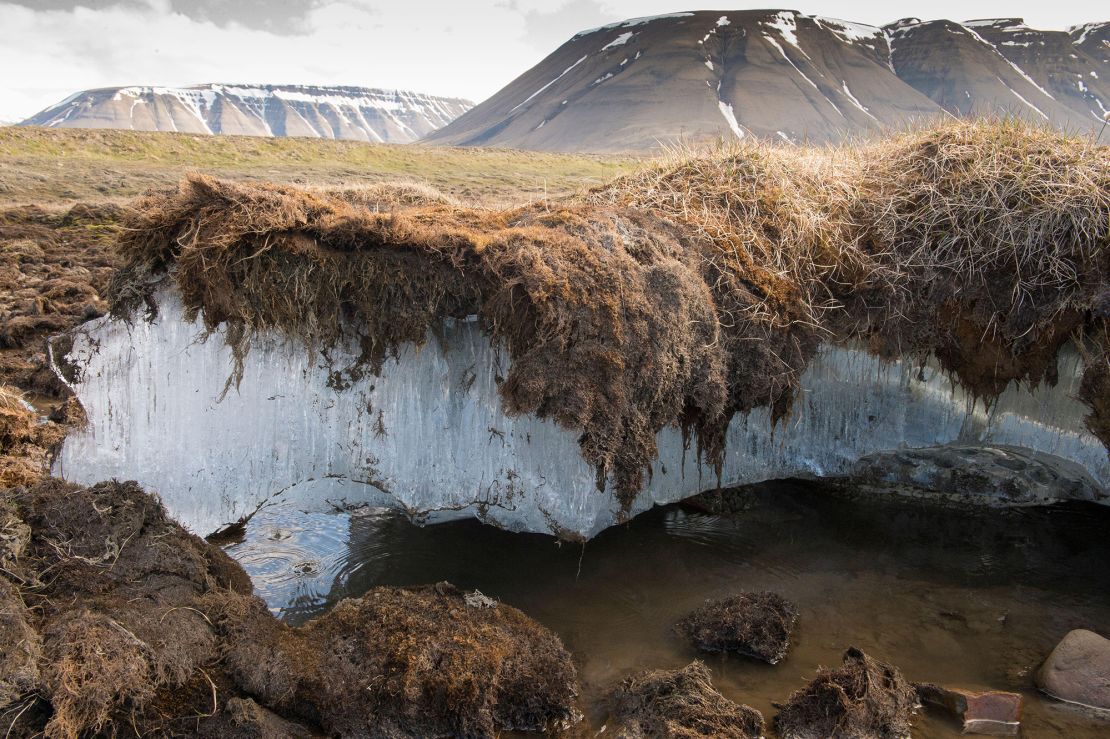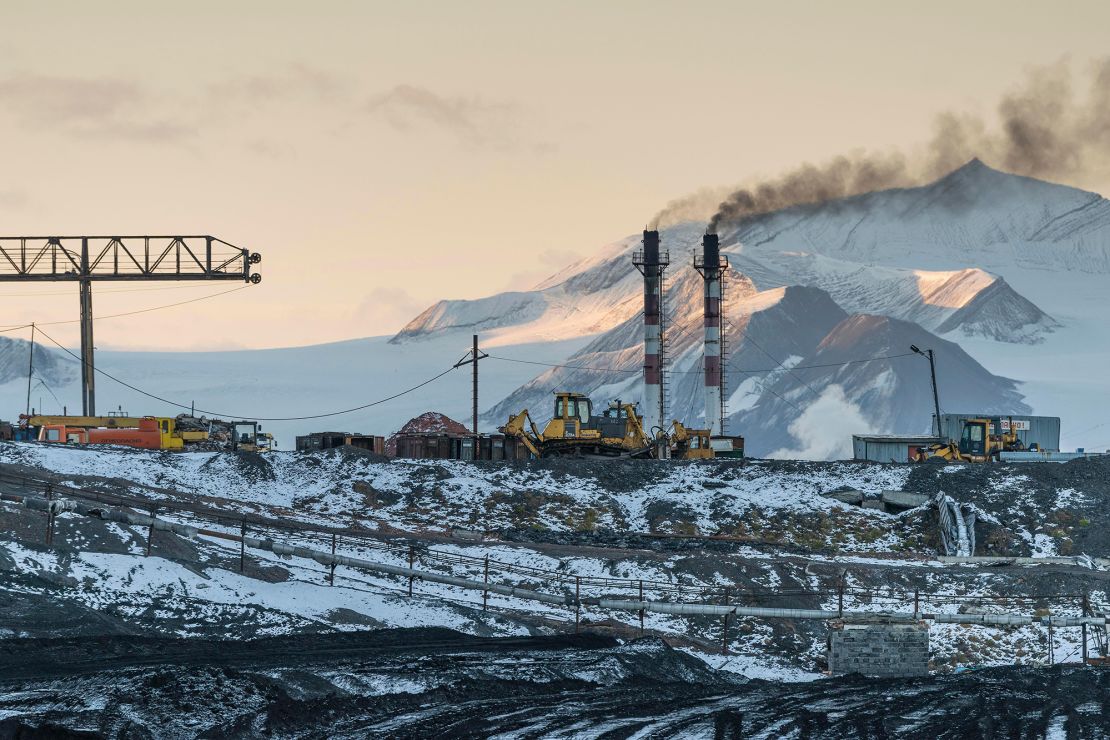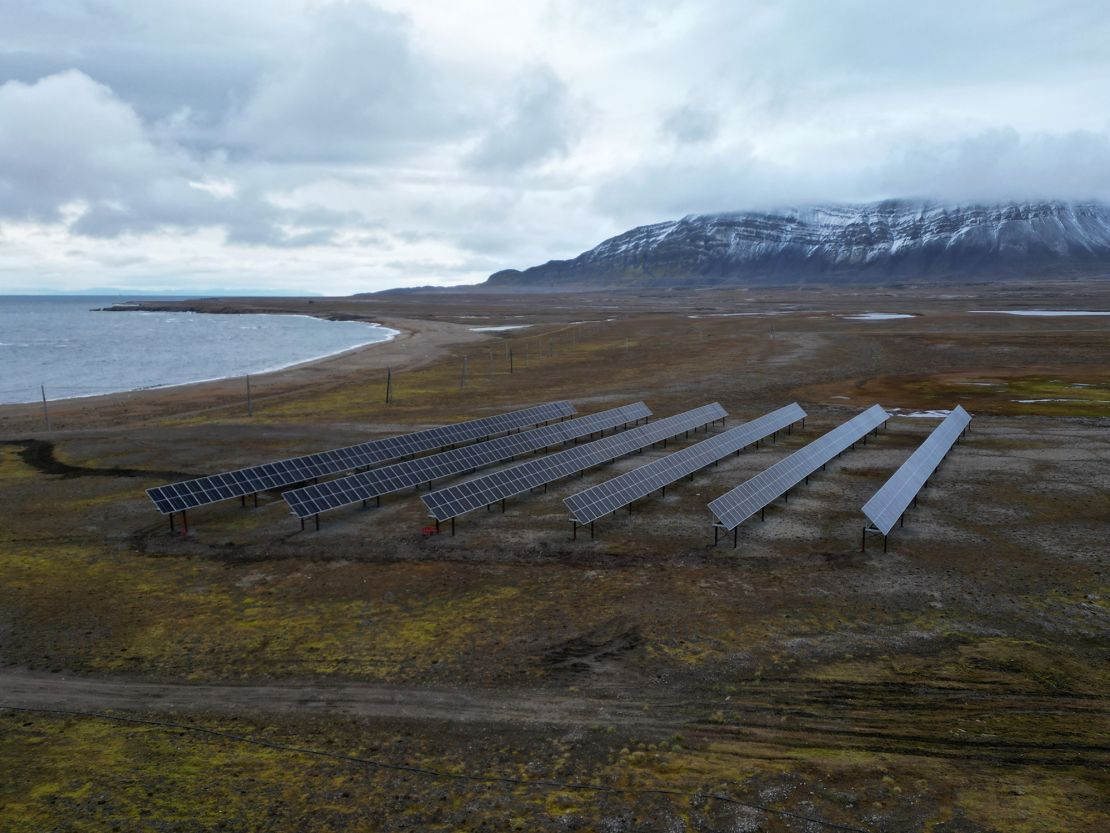CNN
—
The frozen expanses of the Arctic are fast becoming some of the world’s hotspots.
President Donald Trump’s bid for Greenland, and growing Russian and Chinese interest in opening the sea lanes along Siberia’s northern coast, have put these remote regions in the spotlight.
But the Arctic’s newfound popularity is not all about geopolitics. Destinations along the Arctic Circle, from Alaska to Lapland, are reporting record visitor numbers as adventurous travelers seek the thrill of exploring the planet’s ultimate frontiers.
A Swedish startup called OceanSky Cruises is even planning to run luxury airship journeys to the North Pole, although there’s no launch date in sight.
But while the apex of our planet may remain beyond the reach of the average traveler for quite some time, some airlines can fly incredibly close to it.
One of the most extreme pieces of land on this planet, as far as latitude is concerned, is actually quite easy to get to.
Svalbard Airport, on Norway’s Svalbard archipelago, is the world’s northernmost airport with scheduled commercial flights.
Two airlines, SAS and Norwegian, fly year-round between the airport in Longyearbyen, the main settlement on the islands, and the Norwegian mainland, more than 800 kilometers (500 miles) to the south.
The airport regularly welcomes charter flights and private jets too, such is the allure of its unique geographical location.
A vital link to a fragile place

The Arctic is one of the world’s most environmentally fragile regions and the team at Svalbard Airport has already had a first taste of the effects of climate change.
When Longyearbyen’s 2,300-meter-long runway was built in the early 1970s, no one expected the permafrost layer it was constructed on to start melting. But that is exactly what’s happening now.
Permafrost is defined as ground that’s remained frozen for at least two years. The heating and thawing of permafrost has become a significant issue for Svalbard, with the resulting instability and subsidence affecting buildings and infrastructure and increasing the risk of landslides and avalanches.
“During the summer months we must check the runway meticulously every day, because the soil might subside at any point. This is a challenge that we only expect to get worse with time,” Ragnhild Kommisrud, the airport’s manager, tells CNN by phone.

It’s hard to overestimate the importance of that runway for Svalbard’s 2,500 or so inhabitants. Were it to close down, most of their essential supplies would have to arrive by ship, a journey that can take up to two days each way.
“We always keep extra staff and material here at the airport, because if something breaks down, we must be able to repair it ourselves, without outside help,” says Kommisrud. For instance, after the local power plant malfunctioned, she says emergency generators had to be sent from the mainland on a C-17 Globemaster military cargo aircraft.
Power generation has long been a sensitive issue on Svalbard.
On the one hand, the local community has a vested interest in helping prevent global warming and preserving the archipelago’s pristine nature. On the other hand, until very recently, much of the local economy was running almost entirely on coal.
Quitting coal
Despite its remoteness, Svalbard is endowed with rich coal deposits right next to deep ice-free fjords, making it a suitable place for mining.
Under the Svalbard Treaty of 1920 – signed by countries including the US, Japan and many European Union nations — Norway has sovereignty over the islands but other signatory countries have the right to develop economic activities on the archipelago as well.
As a result, Norway, Sweden and the Soviet Union (and later, Russia) established mining operations in the area in the first half of the 20th century.
In times of heightened environmental sensitivities — particularly in a country like Norway, whose mainland is powered almost entirely by renewable energy sources — this dependency on coal has been a sore spot in recent times.
Over the last decade the Norwegian-operated mines have been winding down their production. Sveagruva, one of the largest and most productive mines on Svalbard, was shut in 2020 and the area was rewilded. A Russian-operated coal mine at Barentsburg, the island’s second-largest settlement, remains open but is reportedly reducing production.

Svalbard has also been a major coal consumer, burning it to produce heating and electricity for the local community. Moving onto alternative power sources was not just a matter of becoming greener; the future of the community depended on it.
In 2023, Longyearbyen’s coal-fired power station was finally shut down. Its replacement was a new diesel-powered plant, an imperfect solution on account of its still high carbon footprint, but one that, nevertheless, managed to cut carbon emissions nearly in half.
However, this was still not good enough for Avinor, Norway’s government-owned airport operator, which manages Longyearbyen and more than 40 other airports throughout the Scandinavian country.
Avinor is expected to play a central role in the ambitious decarbonization strategy Norway has laid out for its aviation sector. It has committed to reducing its greenhouse gas emissions by 42% by 2030 in relation to 2022 levels and by 90% by 2050.
Something had to be done to bring down emissions at Avinor’s northernmost airport, which, despite its limited activity, accounted for a big chunk of the company’s carbon footprint. The solution is coming in the form of yet another new power plant, this one exclusive to the airport and powered by biogas.
The lure of darkness

If all goes according to plan, this new plant is expected to enter service towards the end of 2025 or early 2026, subject to the completion of the ongoing governmental approval process.
Hege Ringnes, senior climate advisor at Avinor, tells CNN that biogas produced on the mainland using renewable energy has a relatively low carbon footprint, even when shipping is taken into account.
The airport plant will then be connected to Longyearbyen’s electricity grid and act as an additional resource in the hypothetical case that the town’s diesel plant needs a backup. So hopefully next time it won’t be necessary for the military to send a C-17 loaded with generators.
Intriguingly, though Svalbard spends four months a year in total darkness, it has had a solar power plant since 2015.
“True, it is not operative for part of the year, but in summer, the tables turn and we get almost 24 hours of uninterrupted daylight,” explains Kommisrud. In fact, she adds, solar power harvesting works better under cooler temperatures so the arctic conditions make this plant particularly productive when the sun shines.
With coal mostly gone, Svalbard has turned to tourism as its major economic activity.
“Svalbard used to be an extreme tourism destination, catering to the most adventurous travelers. It is still pretty niche, but we are becoming more mainstream,” says Ronny Brunvoll, CEO of Visit Svalbard, an association representing more than 70 private tourism-related businesses.

Summer has traditionally been peak season, when several cruise companies run expeditions to the region. However, the season is being extended as more people are coming to Svalbard in winter, to enjoy the Northern Lights, as well as in early spring, when days get longer but it’s still possible to enjoy outdoor activities such as dog-sledding and snowmobile tours.
Touring Svalbard comes with some important caveats, though. Brunvoll has some words of caution about the realities on the ground and why visitors are not advised to leave town without a guide.
“There’s a very real chance to come across a polar bear. Then, there’s the weather, which can change very abruptly. It can be brutal. And if something happens, don’t expect to have mobile signal in most places. You must be prepared and know what you are doing.”
Despite these limitations, the dangers of overtourism are very present in everyone’s minds. The number of lodgings on Svalbard has been capped at 500 rooms and is expected to remain this way for the foreseeable future.
Tourism may well be Svalbard’s new coal, but both the tourism industry and the authorities appear to be well aware of their duty to protect the untamed wilderness that makes these islands such a fascinating place.





